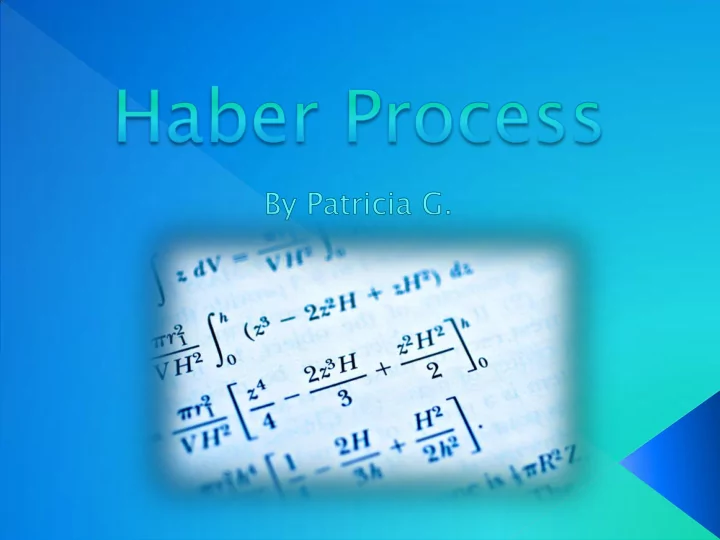

N 2 (g) + 3 H 2 (g) ⇌ 2 NH 3 (g) (ΔH = −92.22 kJ·mol −1 ) This reaction is an exothermic reaction because it releases heat. (Shown on the products side (left)).
The Haber Process is used to produce ammonia used in many different ways. It is a process which is used as a fertilizer (nitrogen fertilizer) but also during World War One it was then changed in other substances to be used as explosives and weapons
The Haber Process was created by Fritz Haber a German Chimist in 1909, born in Germany. He also was rewarded with a Noble Prize in 1918.
This reaction has to be carried out at very high temperatures; between 350- 500 o C, and has to be between 15- 25mPa.
With Le Chatelier’s Principle: the forward reaction is favoured by: removing the product, the equilibrium reaction will make more product which is in this direction -> (forward) What happens is that the mixture tries to get back to the original form, the form which it was before product was remove. When heat is removed from an exothermic reaction to cool down, the products side will also be favoured making the forward reaction favoured.
The type of catalyst used in this reaction is the iron catalyst (K 2 O, CaO and Al 2 O 3 )
Today the Haber Process is important, it maintains one third of the earth’s population with it’s nitrogen fertilizer, BUT it is a very bad substance for the environment. Per year, the Haber Process produces approximately 500 million tons of fertilizer per year. It also is used for glass as cleaning supplies.
Recommend
More recommend